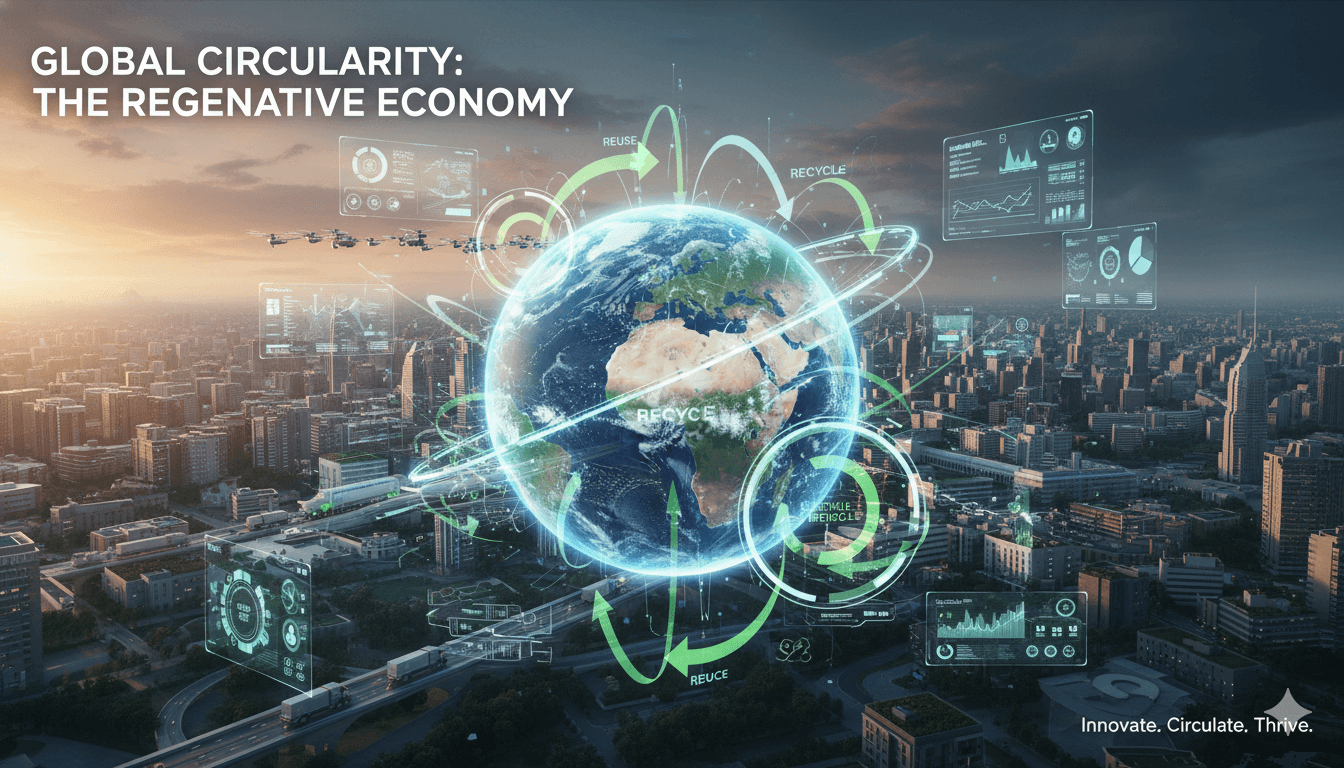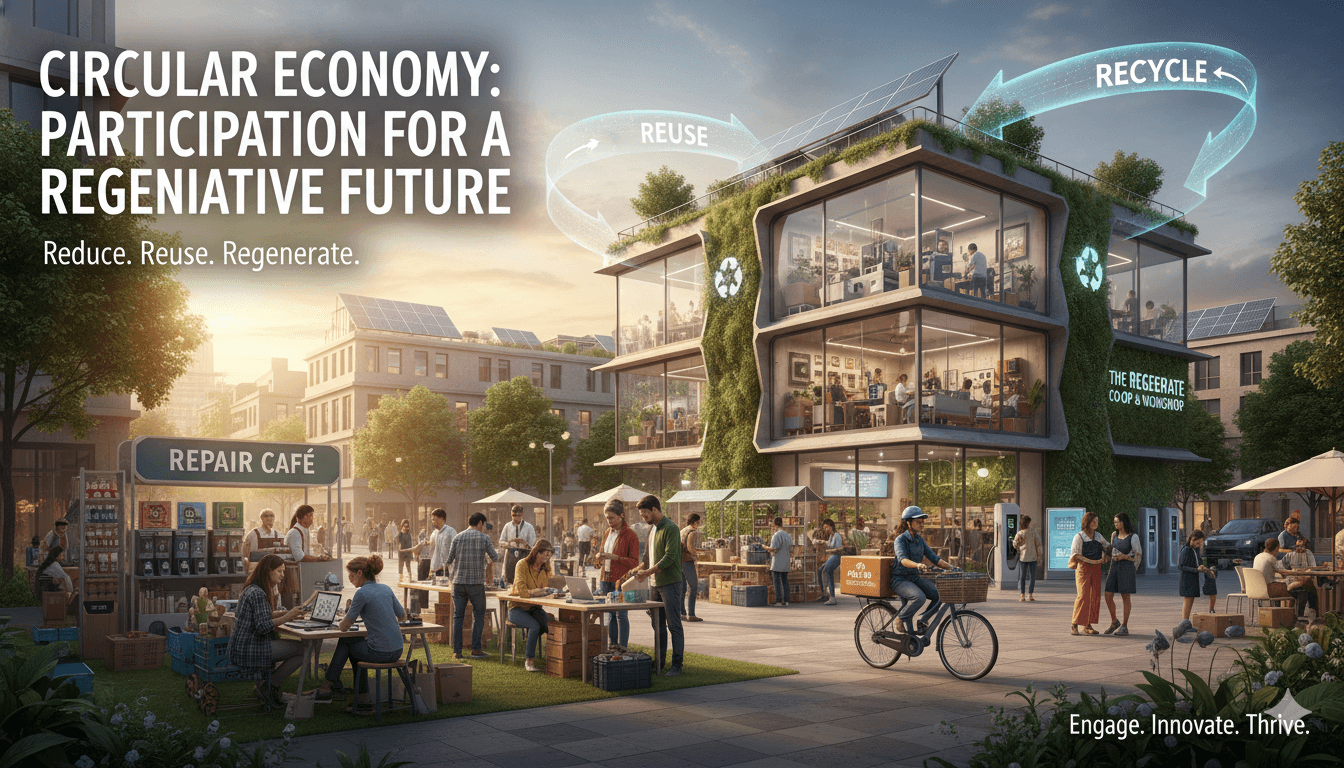In 2026, the world is witnessing a profound shift in how goods are designed, produced, and consumed. This shift — known as the circular economy revolution — represents a break from the traditional “take-make-dispose” model that has dominated industrial systems for over a century. Instead of waste, we now talk about resources. Instead of ownership, we emphasize sharing, reuse, and longevity. The circular economy is more than just a sustainability trend; it is reshaping global business, inspiring innovation, and redefining how value is created in every sector.
1. Understanding the Circular Economy
The circular economy is an economic system aimed at eliminating waste and the continual use of resources. It prioritizes reuse, repair, refurbishment, remanufacturing, and recycling to create a closed-loop system. By doing so, it minimizes resource input, waste generation, and carbon emissions. In 2026, this concept has evolved from theory to mainstream practice, supported by major corporations and global policies that encourage sustainable production and responsible consumption.

2. From Linear to Circular: A Paradigm Shift
In the linear economy, products are designed with limited lifespans and are often discarded after use. The circular model challenges this by extending product lifecycles. Companies design goods that are easier to repair, upgrade, or recycle. This transformation requires innovation not only in product design but also in logistics, business models, and consumer behavior. The result is a more resilient, regenerative system that aligns profitability with sustainability.
3. The Business Case for Circularity
In 2026, circular business models are proving to be both economically and environmentally beneficial. According to the World Economic Forum, adopting circular strategies could generate over $4.5 trillion in economic benefits globally by 2030. Companies implementing circular approaches report improved resource efficiency, reduced production costs, and stronger brand loyalty among environmentally conscious consumers.
4. Sectors Leading the Circular Revolution
Several industries have emerged as leaders in circular innovation:
- Fashion: Brands like Patagonia and Stella McCartney are pioneering recycling programs and clothing resale platforms.
- Technology: Tech giants refurbish and resell devices while developing modular products designed for easy repair.
- Automotive: Car manufacturers are creating circular systems for battery reuse and vehicle recycling.
- Construction: Buildings are now designed for deconstruction, enabling materials to be reused rather than wasted.

5. The Role of Policy and Regulation
Governments around the world are adopting policies to encourage circularity. The European Union’s Circular Economy Action Plan sets ambitious targets for waste reduction, product durability, and eco-design standards. Similarly, several Asian and African countries are investing in circular innovation hubs and green entrepreneurship programs. In 2026, global trade frameworks increasingly reward companies that prioritize sustainable materials and responsible manufacturing.
6. Circular Design: Building Products That Last
At the heart of the circular economy is design. Circular design principles encourage manufacturers to think about a product’s entire lifecycle. Materials must be durable, repairable, and recyclable. Companies like IKEA and Philips are integrating circular design into their products, ensuring that components can be easily replaced or repurposed. This not only reduces waste but also encourages long-term customer relationships.
7. Digital Tools Driving Circular Innovation
Technological advancement is accelerating the circular transition. Blockchain technology tracks materials across supply chains, ensuring transparency and accountability. 3D printing allows companies to produce spare parts on demand, reducing the need for mass production. Data analytics and product-as-a-service models enable companies to retain ownership of products while providing continuous maintenance and upgrades. In 2026, digital innovation and sustainability have become deeply interconnected.
8. Consumer Behavior and the Sharing Economy
The rise of the sharing economy has redefined ownership. In 2026, more consumers prefer access over possession — renting, leasing, or sharing products instead of buying them. Platforms for tool-sharing, clothing rental, and peer-to-peer resale are booming. Consumers are also more informed about sustainability, demanding brands that align with their values and offer transparency about sourcing and production.

9. Waste as a Resource: Closing the Loop
In a circular economy, waste becomes the starting point for something new. Industrial symbiosis — where the byproducts of one process serve as raw materials for another — is becoming standard practice. For example, food waste is converted into biogas or compost, and plastic waste is transformed into building materials or textiles. The goal is a regenerative system that continuously cycles resources, eliminating the concept of “waste” altogether.
10. The Future of Global Supply Chains
In 2026, global supply chains are becoming more circular through localized manufacturing, reverse logistics, and material tracking. Companies are rethinking transportation routes to minimize emissions and investing in closed-loop recycling facilities. The result is a more sustainable, resilient, and cost-effective network capable of withstanding global disruptions.
11. Challenges Ahead
Despite progress, the transition to circularity faces challenges. Many regions still lack the infrastructure to support large-scale recycling. Consumers may be resistant to change or unaware of circular options. Businesses must also navigate regulatory complexity and upfront investment costs. However, the long-term environmental and economic benefits outweigh these obstacles, and innovation continues to drive momentum.
12. Circular Economy and Climate Goals
The circular economy plays a crucial role in meeting climate targets. By reducing resource extraction and waste, it helps cut global emissions significantly. According to the Ellen MacArthur Foundation, circular strategies could eliminate nearly 40% of global CO₂ emissions from industry. In 2026, circularity isn’t just an environmental choice—it’s an essential pathway to achieving net-zero goals.
13. The Global Movement for Circular Change
Across continents, movements promoting circular lifestyles are growing. Community repair cafés, zero-waste markets, and sustainable startups are redefining how people live and consume. From Berlin to Nairobi, a new generation of entrepreneurs is proving that sustainability can be profitable and inclusive.
Conclusion
The circular economy revolution of 2026 marks a turning point in global business and sustainability. It proves that progress doesn’t require endless consumption — it requires smarter systems. By embracing reuse, repair, and recycling, the world is building a more resilient economy that protects both people and the planet. The future is not linear; it is circular — and it’s already here.

